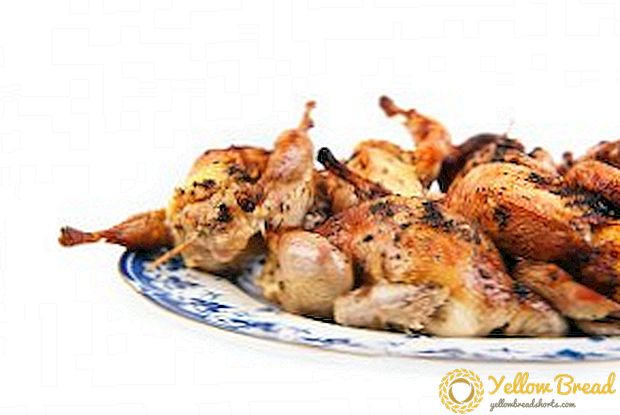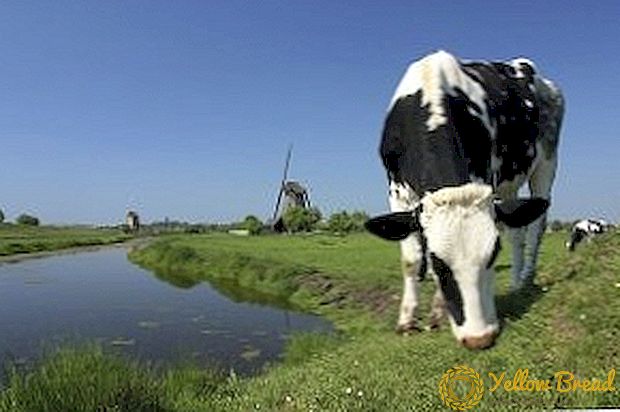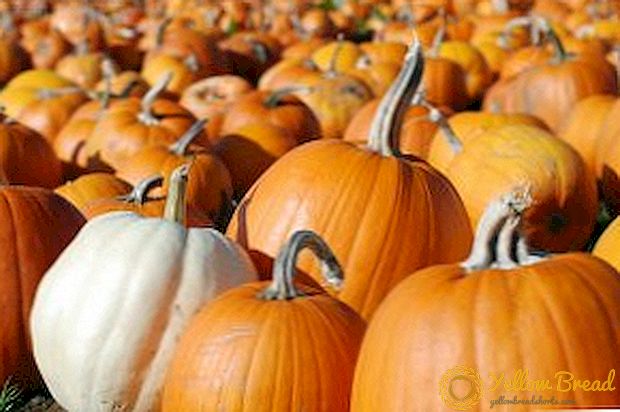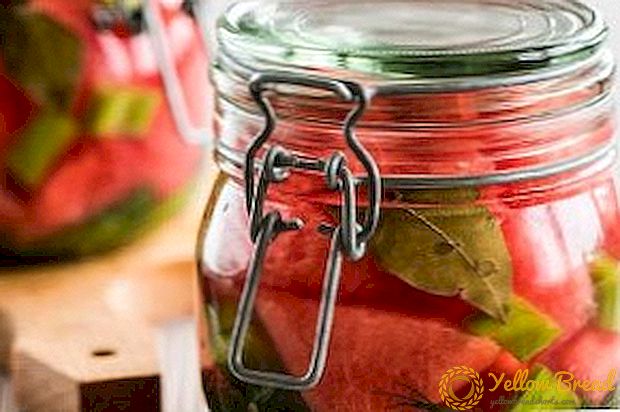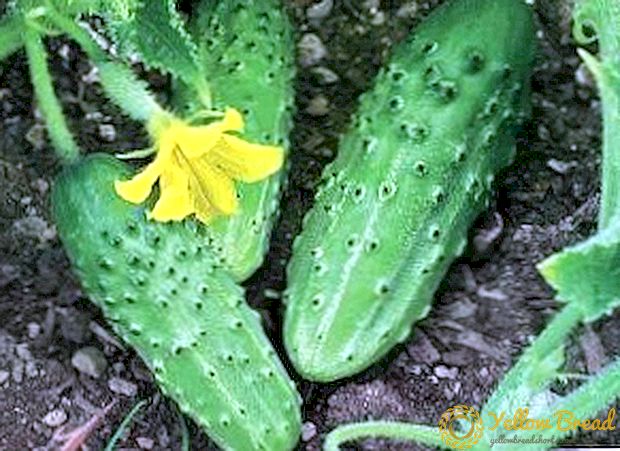
Red cabbage is a type of white cabbage. It has bluish-purple leaves, sometimes with a purple tinge, the specific color of which is already visible in seedlings.
Red cabbage is a type of white cabbage, but the color of its leaves is distinguished by a thick burgundy color, turning into purple.
In beauty it is not inferior to roses, but in taste it is comparable with white one, only more rigid and with a little wit. This article describes in detail what is its use and whether harm is possible. Also presents recipes with this vegetable.
Chemical composition
The chemical composition per 100 g of red cabbage is as follows:
- Calories 26 kcal.
- Protein 0.8 g
- Fat 0.6 g
- Carbohydrates 5.1 g
- 91% is water.
How is it good for your health?
Useful properties of red cabbage for the body:
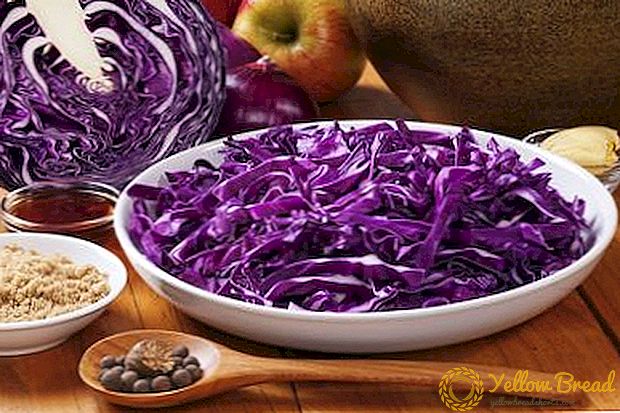 Red cabbage will be useful for women and men who look after a figure. It has a lot of fiber, which gives a rapid saturation of food. At the same time calories in cabbage a little.
Red cabbage will be useful for women and men who look after a figure. It has a lot of fiber, which gives a rapid saturation of food. At the same time calories in cabbage a little.- Cellulose is the prevention of diseases of the heart and blood vessels, constipation, diabetes, obesity, cancer. Fiber also helps to normalize cholesterol in the blood, because they absorb it and contribute to the removal of cholesterol from the body.
- The purple color of cabbage leaves indicates the presence of anthocyanin pigments in its composition. Anthocyanins are a powerful antioxidant that helps prevent diseases of the cardiovascular system and cancer. Antioxidant directs its activities to reduce the activity of free radicals.
- As part of red cabbage there is a newly discovered vitamin U, which promotes healing of injuries in the gastrointestinal tract, has antihistamine properties, normalizes fat metabolism, cerebral circulation, which is useful for red cabbage.
- Vitamin A in the composition of red cabbage supports immunity and vision.
- There is more vitamin C in the red one than in the white one, and this is a strengthening of immunity, opposition to colds, infectious diseases, good healing of injuries on the body.
- Due to vitamin K cabbage works well in the prevention of dementia, Alzheimer's disease, and nervous diseases.
- Red cabbage is a good prophylactic agent for a disease such as osteoporosis and serves as a good aid in strengthening bone tissue. And all this is due to the presence in its composition of calcium, magnesium and potassium.
- Cabbage has diuretic properties. Normalizes the bowels and the acidity of the stomach.
Cabbage is a safe product. Harm can inflict only in the case of individual intolerance, with abuse of the amount eaten, while ignoring personal recommendations on nutrition.
Prohibition and restriction
 It is not recommended to eat cabbage during breastfeeding, as this may cause colic in a child.
It is not recommended to eat cabbage during breastfeeding, as this may cause colic in a child.- Small children can be given cabbage in the form of mashed potatoes from 1 year. The child will grow up himself will grab the leaves of cabbage and chew with pleasure.To instill a habit of fresh vegetables is easier in childhood.
- Excessive consumption of red cabbage can lead to flatulence, bloating and other unpleasant symptoms.
- High levels of vitamin K in cabbage contribute to blood thickening. If, according to the doctor, it is necessary to take drugs for blood thinning, then the effectiveness in tandem with red cabbage will be reduced. But absolutely healthy people should not experiment with health, eating too much red cabbage.
- Also, people with a lack of iodine in the body should control the amount of red cabbage in their diet. Cabbage can provoke the suppression of thyroid function.
- When exacerbation of gastrointestinal diseases, cabbage is excluded from the diet.
What can be cooked from it?
Where is this vegetable used? Recipes with red cabbage differ little from recipes with white cabbage. It is mainly used for making salads, side dishes. Also the cabbage is pickled.
Mushroom Salad
Ingredients:
- 300 grams of cabbage;
- 300 g of mushrooms;
- 2 medium pickled cucumbers;
- 200 g sour cream;
- bulb;
- salt and sugar to taste;
- greenery.
Cook like this:
- To prepare the salad, it is necessary to chop the cabbage finely, lightly salt it, mix it up, firmly rub it with your hands until the juice is formed.
- Then cut the boiled mushrooms into strips. It can be white mushrooms or champignons.
- Next you need to chop the pickled cucumbers and fresh onion.
- All products mix, season with sour cream, salt, add sugar to taste, decorate with greens.
Pickling
Ingredients for 10 kg of slaw: 200 g of finely ground salt.
 To fill:
To fill:
- 400 g of water;
- 20 g of salt;
- 40 g sugar;
- 500 grams of vinegar.
Spices on 1 jar:
- 5 black peppercorns;
- 5 peas allspice;
- a piece of cinnamon;
- 3 cloves;
- 1 bay leaf.
This recipe will attract housewives, because it is very easy to use.
- It is necessary to choose the most dense, healthy cabbages for pickling, clean them from the top withered leaves, carefully cut the stalk.
- Then you can proceed to shredding cabbage.
- In the enameled basin carefully rub salt and cabbage and leave for 2 hours.
- Then take well-washed jars, put spices on the bottom and tightly pack cabbage into them.
- After that, the marinade is poured into the jars, and the top is filled with vegetable oil.
- Store in a cool place: in the cellar or underground.
Red cabbage is a useful product due to the high content of vitamins, fiber, macro-and micronutrients. Recommended by nutritionists daily rate is 200 g. Prepare side dishes and salads, and your body will thank good health.

 Red cabbage will be useful for women and men who look after a figure. It has a lot of fiber, which gives a rapid saturation of food. At the same time calories in cabbage a little.
Red cabbage will be useful for women and men who look after a figure. It has a lot of fiber, which gives a rapid saturation of food. At the same time calories in cabbage a little. It is not recommended to eat cabbage during breastfeeding, as this may cause colic in a child.
It is not recommended to eat cabbage during breastfeeding, as this may cause colic in a child.